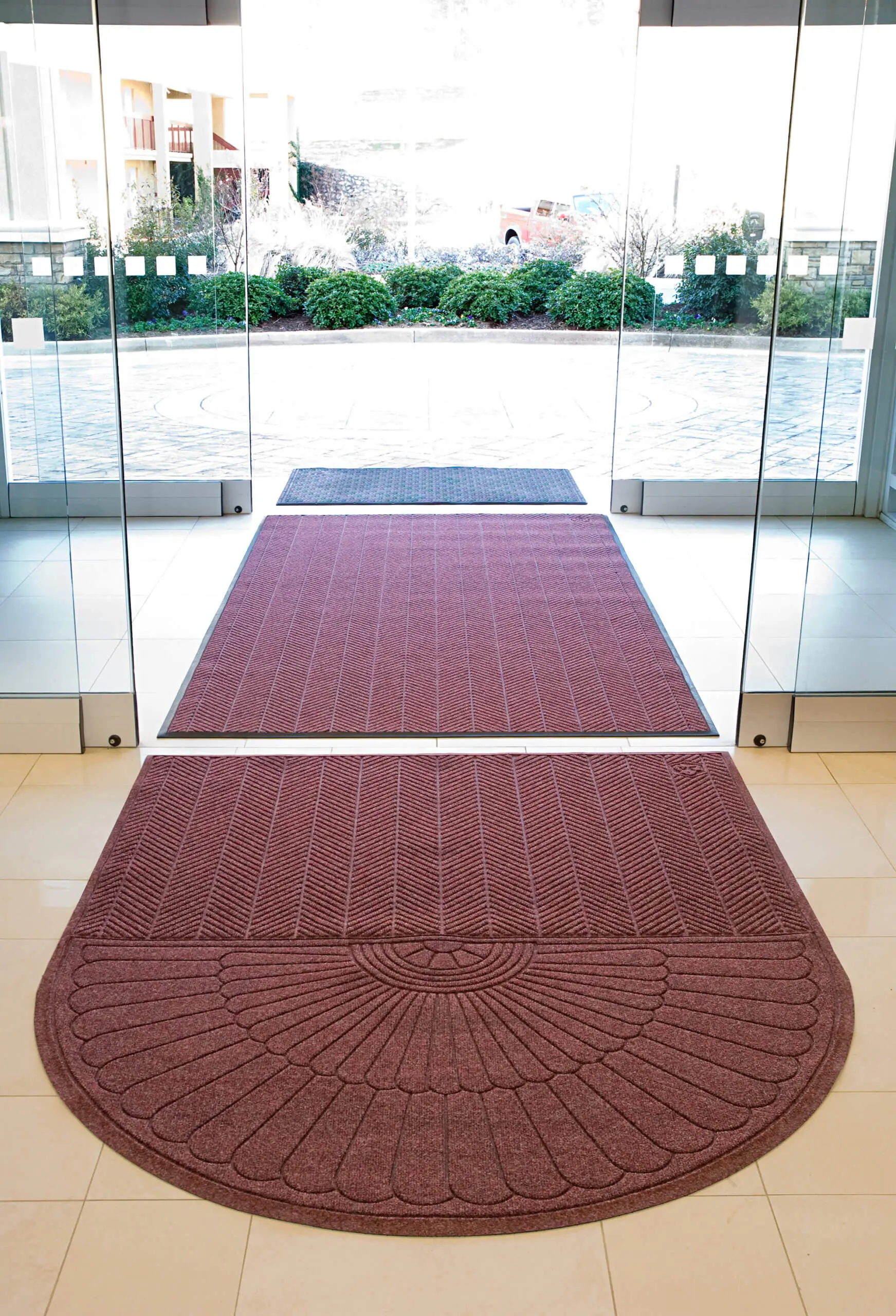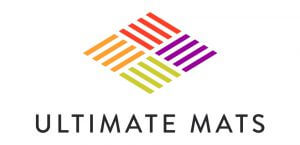
How To Choose an Entrance Mat
Choosing the right entrance mat is more than a practical decision; it’s the first step in welcoming guests into your space.
Whether you’re a homeowner looking to add that welcoming touch or a business aiming to keep your entryway safe and clean, selecting the ideal entrance mat can be a nuanced task.
It involves balancing functionality with aesthetics and durability with design, ensuring that your choice not only serves its primary purpose but also complements your space.
In this article, you will learn:
- The importance of material and durability in entrance mats.
- How to match the mat with your space’s aesthetics.
- Tips for choosing a mat that meets your specific needs.
Let’s ensure you have the right mat for your needs.
Understanding Entrance Mats: Types and Purposes
Entrance mats, often the unsung heroes of both homes and businesses, serve several key roles beyond merely providing a spot to wipe your feet.
They’re the first line of defense against dirt, moisture, and debris, actively contributing to the cleanliness and safety of interior spaces. Additionally, entrance mats can be a subtle yet impactful part of a space’s aesthetic, offering a warm welcome or reinforcing a brand’s identity right at the threshold. But with a variety of types available, how do you choose the right one?
Different Types of Entrance Mats
Entrance mats come in a vast array of materials, shapes, and sizes, each tailored to specific needs and environments. The most common types include:
- Scraper Mats: Designed primarily for outdoor use, these mats feature rough surfaces to effectively remove heavy dirt and debris from shoes before entering a building.
- Wiper Mats: Best placed just inside entrances, wiper mats are made from softer, more absorbent materials, perfect for drying wet shoes and catching finer particles.
- Anti-Fatigue Mats: Though not traditionally used at entrances, anti-fatigue mats are essential in spaces where individuals stand for long periods, offering comfort and reducing strain.
- Decorative Mats: Combining functionality with aesthetics, decorative mats can enhance the entrance’s look while still serving the practical purpose of cleanliness and safety.
The Primary Purposes of Entrance Mats
The functionality of an entrance mat extends beyond the obvious task of trapping dirt. Here are the primary purposes they serve:
- Safety: By absorbing moisture, entrance mats reduce the risk of slips and falls, a crucial consideration for any space.
- Cleanliness: A well-chosen mat can significantly reduce the amount of dirt and debris tracked inside, easing the cleaning process.
- Aesthetic Appeal: The right mat can complement an interior’s design, making a positive first impression on visitors or clients.
Understanding the types of entrance mats and their purposes is the first step in selecting the perfect option for your space. Whether your priority is durability, safety, or design, there’s an entrance mat tailored to your needs.
Material Matters: Selecting the Right Fabric and Construction
The longevity and effectiveness of an entrance mat heavily depend on its material and construction. These elements determine not just the mat’s durability but also its capacity to trap dirt, absorb moisture, and complement the aesthetic of your entrance. With the myriad of options available, understanding the strengths and applications of each material is key to making an informed decision.
Common Materials for Entrance Mats
- Coir: Derived from coconut husks, coir mats are natural, coarse, and excellent for scraping dirt off shoes. They’re best suited for dry, covered areas where their rustic look can shine.
- Rubber: Durable and resistant to water, rubber mats excel in outdoor settings where moisture and heavy foot traffic are common. Many feature drainage holes for added slip resistance.
- Polypropylene: Known for its moisture-absorbing properties, polypropylene mats are ideal for indoor use, especially in entryways prone to wet conditions. They dry quickly and resist staining.
- Nylon: Offering a blend of durability and aesthetic versatility, nylon mats can effectively trap dirt and moisture while being available in various colors and designs.
Construction Matters
The way an entrance mat is constructed affects not only its functionality but also its maintenance requirements and lifespan. For instance:
- Tufted Mats: These mats have fibers tufted into a backing, creating a dense, plush surface that’s effective at trapping dirt and moisture. They require regular cleaning but offer a welcoming appearance.
- Woven Mats: Durable and often used in high-traffic areas, woven mats are made by interlacing threads. They’re less absorbent but stand up well to heavy use.
- Molded Mats: Constructed from rubber or thermoplastic, molded mats are exceptionally durable and often feature raised patterns for scraping off dirt and providing slip resistance.
Choosing the Best Material and Construction
When selecting an entrance mat, consider the specific challenges your entryway faces. Is moisture a frequent issue, or is trapping coarse dirt your primary concern?
Do you need a mat that stands up to extreme weather, or are you looking for something that complements your interior decor?
Matching the material and construction of the mat to your unique needs will ensure it performs effectively while enhancing your space’s overall look and feel.
Size and Aesthetics: Finding the Perfect Fit and Look
The right entrance mat goes beyond mere functionality; it’s a statement piece that welcomes visitors, sets a tone, and integrates seamlessly with your space’s design. Choosing a mat that aligns with your aesthetic preferences while fitting perfectly in your designated area requires a careful balance of size, color, and style considerations.
Importance of Mat Size
A mat’s size should be proportionate to your entrance area to ensure maximum efficiency and visual harmony. Here are some guidelines:
- For Home Entrances: The mat should be at least as wide as the doorway. This ensures that anyone entering will naturally step on it, keeping dirt and moisture at bay.
- For Commercial Spaces: Larger mats or a series of mats that allow for at least two to three steps on them are ideal. This increases the chance of cleaning shoes thoroughly before entering the main area.
Matching Mat Aesthetics to Your Space
The aesthetics of your entrance mat can subtly influence the perception of your space. Consider these elements:
- Color: Choose colors that complement your existing décor or branding. Neutral colors are versatile and hide dirt well, while vibrant mats can add a pop of color.
- Pattern and Design: Patterns can add interest and texture to your entrance. Simple geometric patterns or logos can also reinforce branding for businesses.
- Texture: The texture of the mat is not just functional but also contributes to the overall look. Coarse textures suit rustic themes, while smoother mats can look more sophisticated.
Tips for Choosing the Right Mat
- Consider the Overall Theme of Your Space: Whether it’s modern, traditional, or something in between, ensure your entrance mat aligns with the aesthetic.
- Functionality First: While aesthetics are important, the primary function of the mat—be it moisture control, dirt trapping, or both—should not be compromised.
- Don’t Be Afraid to Customize: Many suppliers offer custom sizes and designs, allowing you to perfectly match the mat to your space’s requirements and style.
The entrance mat is often the first interaction someone has with your space. Making sure it’s both functional and aesthetically pleasing can set the right tone from the very first step.
Maintenance and Longevity: Ensuring Your Mat Stands the Test of Time
Selecting the right entrance mat involves not just aesthetic and functional considerations but also thinking ahead about maintenance and longevity. A well-maintained entrance mat not only keeps its appearance longer but also continues to perform its essential functions, ensuring safety and cleanliness at the forefront of your space.
Tips for Maintaining Different Types of Entrance Mats
- Regular Cleaning: Frequency and methods vary by material. Rubber and polypropylene mats often only require hosing down and air-drying, while coir and nylon might need vacuuming and spot cleaning.
- Proper Storage: If your mat isn’t meant for year-round use, store it in a dry, cool place when not in use to prevent damage.
- Immediate Attention to Damage: Address tears, fading, and other damage promptly to prevent accidents and extend the mat’s life.
Knowing When to Replace Your Entrance Mat
Even with the best care, entrance mats will eventually wear down. Signs it’s time for a replacement include visible wear and tear, reduced efficacy in trapping dirt or moisture, and if the mat no longer lies flat on the ground, posing a tripping hazard.
Conclusion
In this article, we’ve navigated the complexities of choosing the perfect entrance mat for your space. From understanding the importance of material and durability, matching the mat with your space’s aesthetics, to ensuring the mat’s longevity through proper maintenance, these key takeaways aim to guide you in making an informed decision. The right entrance mat not only serves a functional purpose but also enhances the first impression of your home or business.
If you’re considering taking the next step in customizing your space, why not explore the possibilities of personalized or custom-designed entrance mats?
Such an addition could uniquely reflect your style or brand, further extending a warm and memorable welcome to all who enter.
Thanks for reading.
David Chapman, founder of Ultimate Mats
